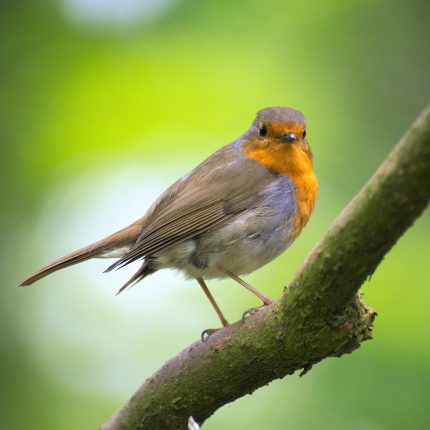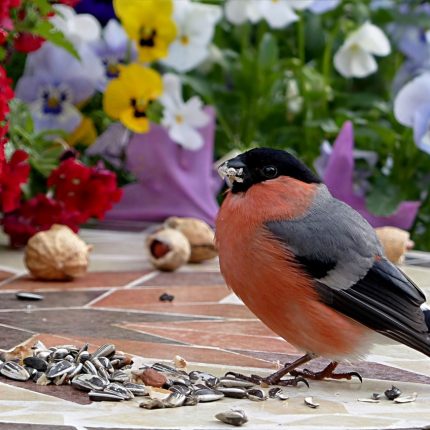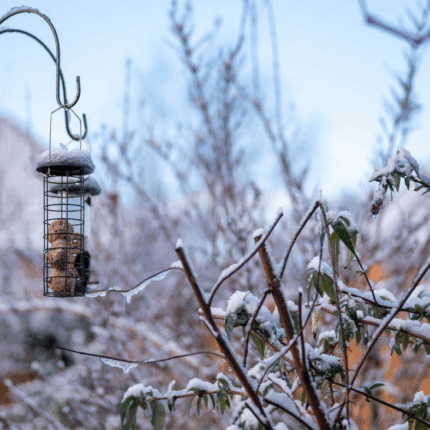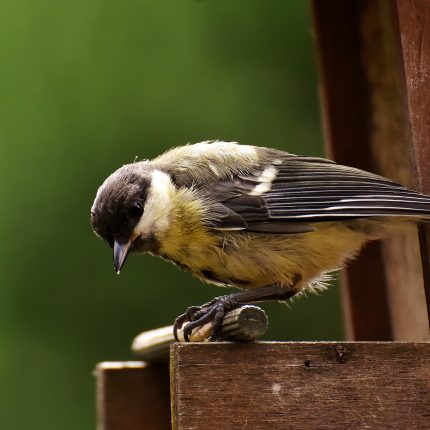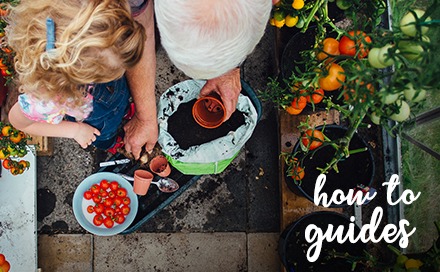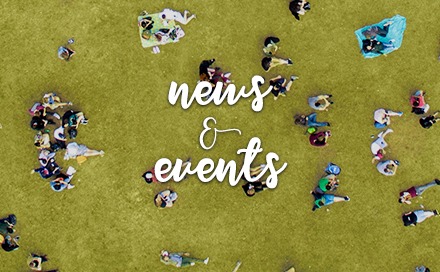Feeding Wild Native Irish Birds: A Complete Guide
As the days shorten and natural food sources begin to dwindle, feeding our native Irish birds becomes both a kind gesture and a vital act of conservation. Over recent decades, changes in agriculture and urbanisation have reduced the availability of natural food and shelter. This means your garden can play a small but important role in supporting Ireland’s birdlife, providing energy, safety, and sustenance throughout the colder months.
Here’s everything you need to know about feeding wild native birds in Ireland, from choosing the right foods to keeping feeders clean and safe for your feathered visitors.
Which Irish birds benefit most from garden feeding?
Ireland is home to a wonderful variety of wild birds, many of which regularly visit gardens in search of food. Some of the most common species you might spot include:
- Robin: A national favourite, known for its friendly presence.
- Goldfinch: Easily identified by its red face and musical call.
- Bullfinch: With its striking pinkish-red chest and black cap.
- Blue Tit: Energetic and colourful, a frequent feeder visitor.
- Chaffinch: Bold and widespread, often seen foraging on the ground.
- Greenfinch: A vibrant visitor that thrives on seeds.
By offering food through the colder months, you’re helping these birds survive harsh conditions and maintain strong breeding populations in spring. Regular feeding also brings life and movement to your garden as well as a rewarding daily connection with nature.
What are the best high-energy foods for wild birds in winter?
During winter, birds need calorie-dense foods to maintain body heat and energy. The right mix of seeds, nuts, and fats can make all the difference.
Energy Balls & Suet Cakes
Suet cakes and energy balls are winter essentials, rich in fats, grains, and seeds. They’re especially important when insects are scarce, offering an instant energy boost for small garden birds. Hang them in wire cages or place them on bird tables to attract Robins, Tits, and Starlings. If you feel like making your own fat balls, Tírlan has a fantastic DIY fat ball feeder guide for anyone interested in learning more.

Sunflower Seeds & Hearts
Sunflower seeds are a bird-feeding classic. They’re packed with oil and nutrients that promote healthy feathers and strong flight muscles.
- Sunflower hearts (hulled seeds) are mess-free and easy for smaller birds to eat.
- Black Sunflower seeds are particularly loved by Greenfinches and Chaffinches.
These seeds can be feed a variety of different ways including on a bird table or in a wired bird feeder.
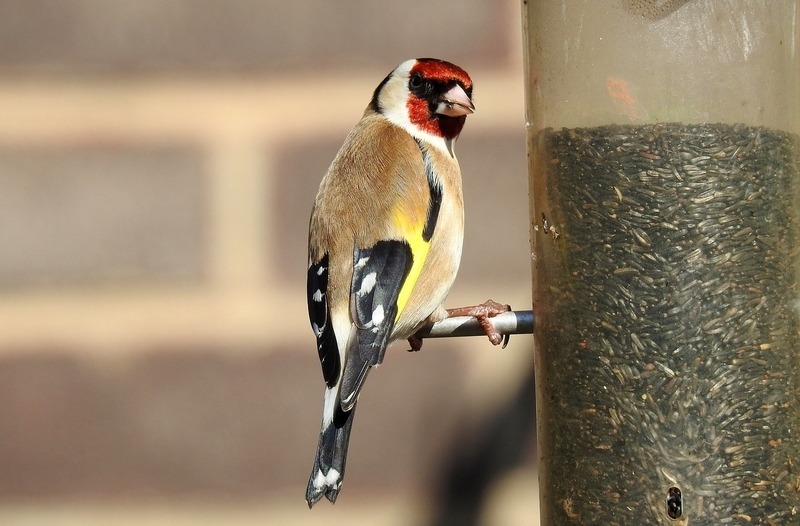
Peanuts
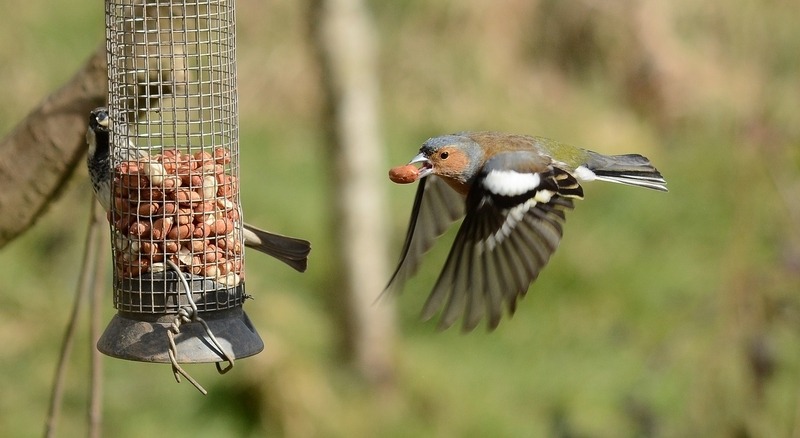
Peanuts are one of the best sources of protein and healthy fats for birds. They attract Blue Tits, Great Tits, Goldfinches, and Robins. Using a wired peanut hanging feeder is the best way to leave out peanuts for birds to eat. The holes in the wire mesh are too small for the birds to take the peanuts out whole. This way it makes the birds peck at the peanuts and break them down into smaller pieces.
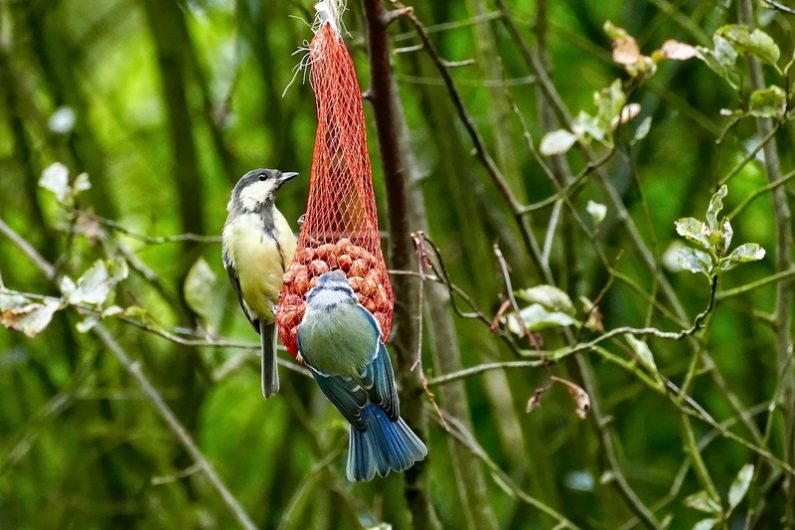
Nyjer Seeds
Tiny but packed with oil, nyjer seeds are a favourite of Goldfinches and Siskins. Their small size makes them perfect for slender beaks. The seeds are a small size which ensures no birds will choke on the seed. This particular seed can be used with any Nyjer bird feeder or feed table.
Mealworms
For a natural protein boost, mealworms are ideal, especially in early spring when birds are feeding chicks. Dried or live, they mimic the insects many species would naturally eat. The Peckish mealworm can also be soaked in water in order to rehydrate the mealworm and make it easier for younger birds to feed and softens the worms for feeding to the chicks.
Mealworms can be used in any garden feeder, hanging feeder or feeding table.

How should I present bird food to attract native species?
Presentation matters. The way you set up your feeding area can influence which species visit, how safe they feel, and how clean the area stays.
- Use a mix of feeders: Combine hanging seed feeders, ground trays, suet cages, and bird tables to cater to different feeding styles. Take a look at our options for some ideas and inspiration.
- Vary the height: Robins and Blackbirds prefer feeding closer to the ground, while Blue Tits and Finches feel safer higher up.
- Keep feeders sheltered: Placing them near shrubs or hedges provides cover from predators and harsh weather.
- Avoid overcrowding: Space feeders a few metres apart to reduce squabbles and disease transmission.
- Keep food dry: Rain can spoil seed quickly, try placing feeders under a small awning or tree canopy for protection.
By creating several small feeding zones rather than one crowded spot, you’ll encourage a wider mix of birds and reduce stress among your visitors.
When should I feed wild birds and is year-round feeding a good idea?
According to bird conservation organisations like Birdwatch Ireland and the RSPB, it’s a good idea to feed your garden birds throughout the year, but it’s especially important to do so over the coldest, darkest months of winter. Birds become dependent on a food source, especially during winter. While winter feeding is most crucial, birds benefit from a steady food supply throughout the year. Each season brings different needs:
- Winter: Offer energy-dense foods such as suet, peanuts, and sunflower seeds.
- Spring: Provide high-protein options like mealworms to support breeding and chick development.
- Summer: Offer smaller amounts and avoid fatty foods that can spoil; try fruit pieces or seed mixes.
- Autumn: Help birds build up reserves before colder weather by continuing with seed and nut mixes.
Consistency is key. Once birds discover a reliable feeding spot, they’ll return regularly, sometimes bringing young birds to learn the ropes!
How do I keep feeders clean and safe for birds?
A clean feeding area is vital for bird health. Dirty feeders can spread diseases such as salmonella and trichomoniasis, so hygiene should always come first.
- Clean feeders every 1–2 weeks with warm water and mild disinfectant.
- Rinse thoroughly and dry completely before refilling.
- Sweep away fallen seed husks and droppings to discourage rodents and mould.
- Move feeders occasionally to prevent waste build-up under one area.
If you notice sick or lethargic birds, take feeders down for a few days to allow the area to dry and recover before reintroducing food.
How can I deter squirrels and larger pests?
Squirrels, crows, and pigeons often see bird feeders as an open buffet. While they’re part of the ecosystem, too many can scare away smaller birds. Try these deterrents:
- Use squirrel-proof feeders with metal cages or spring mechanisms that close under heavier weight.
- Add chilli powder (or use pre-spiced seed blends). Birds can’t taste it, but squirrels dislike it.
- Install baffles or smooth poles to prevent climbing.
- Offer alternative feeding spots. Placing peanuts or maize elsewhere can divert attention from your bird feeders.
With a few smart tweaks, everyone can share the garden peacefully!
How do I choose the right mix and keep things interesting?
Variety not only keeps birds healthy but also attracts a greater range of species. Rotate food types every few weeks and observe who visits. For example:
- Finches favour nyjer seeds and sunflower hearts.
- Tits and Robins love peanuts and suet.
- Blackbirds and Thrushes enjoy mealworms and fruit.
By adjusting your offerings with the seasons, you’ll create a thriving ecosystem in your garden, full of sound, colour, and life.
Be sure to take a look at Tírlan’s guide for making your own bird food if you’d like some inspiration.
Feeding wild native Irish birds is one of the simplest ways to support biodiversity right from your own garden. With a few feeders, some nutritious seed, and a bit of regular care, you can make a meaningful difference for local bird populations, while enjoying the beauty they bring to your outdoor space.
So, grab a cup of tea, settle by the window, and watch the show unfold. A little effort on your part can make a big difference to the wild birds of Ireland.
We’re Here To Help
For more advice on caring for wildlife, bird feeding, and creating a garden that thrives year-round, visit the Tírlan CountryLife Blog for expert tips and seasonal inspiration.

